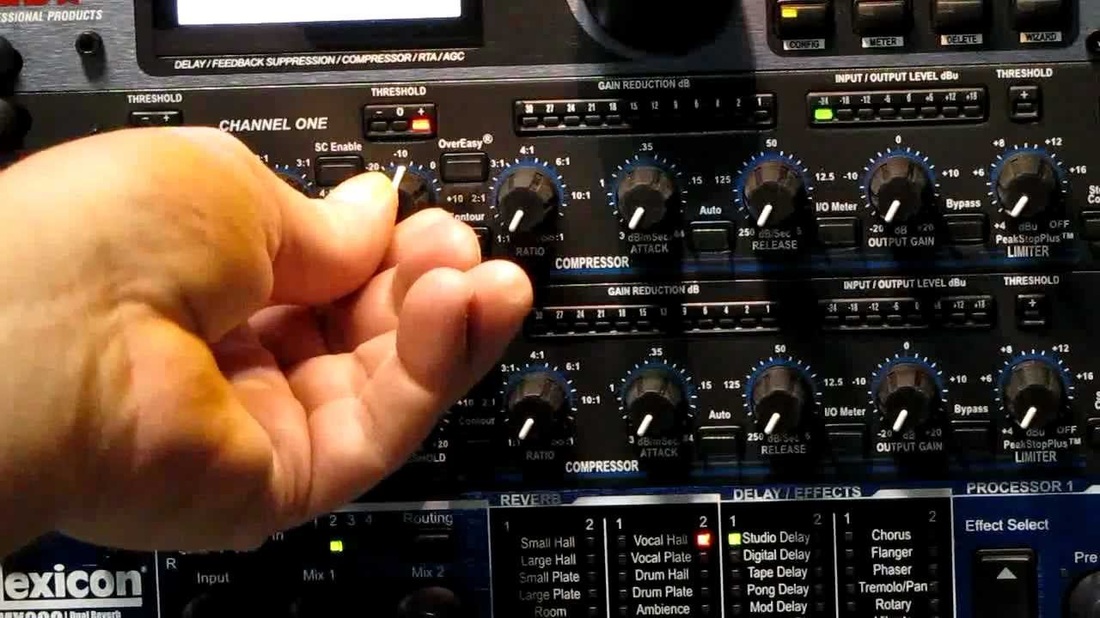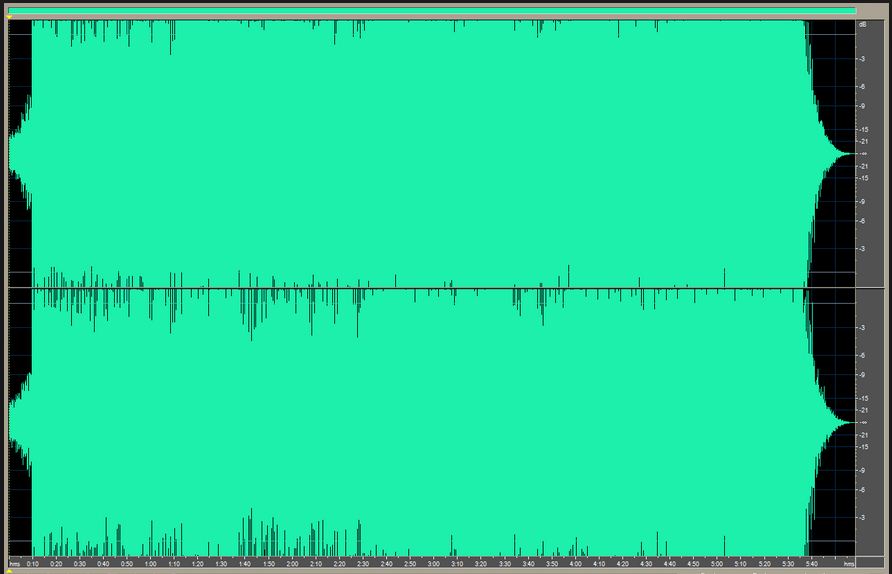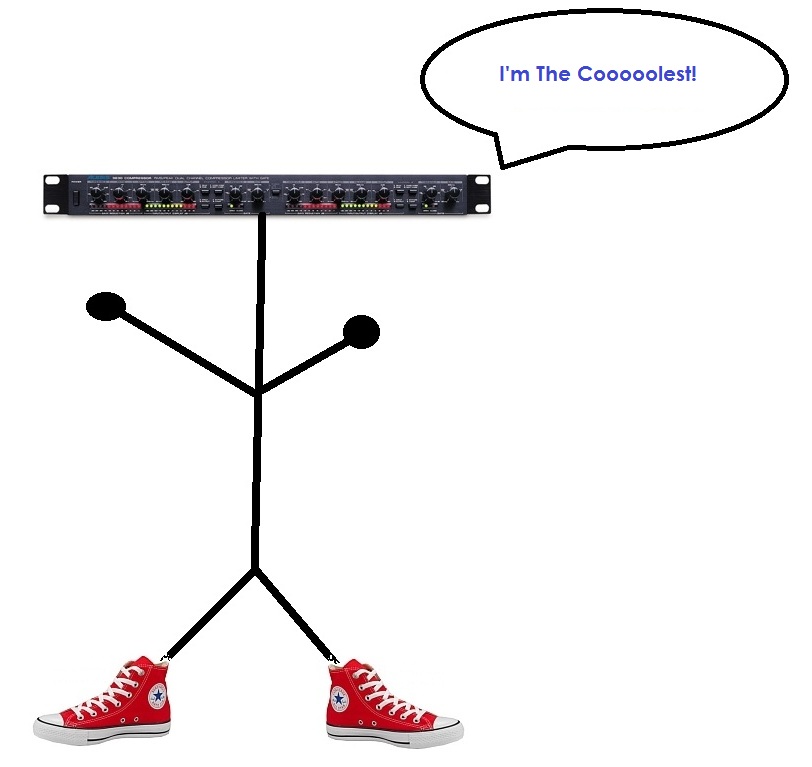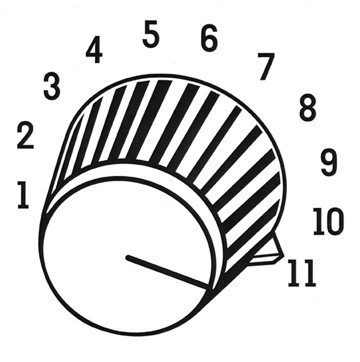|
1. I love to compress an instrument on the way in when I record. This makes sure that I'm not clipping when I crank my microphone preamp to the absolute highest level right before it clips. I loooove not having any headroom in the digital realm. It's awesome. 2. Then, once I record the track, I'll insert a compressor on the instrument's channel. Actually, I'll do this for everything I mix! I like to make everything as huge and "punchy" sounding as possible so that it won't fit in the mix with everything else huge and "punchy!" 3. Then, I'll send that track to a sub-bus and use a compressor there too - you know, just to make sure there are no dynamics at all (cause that would be bad). 4. And theeeennnn, I'll send that to the main out where all of those instruments have been compressed as well - because hey, compression is the coooolest, and I might as well put a limiter on the main insert out so that I can get it as loud as possible for the mastering engineer. That mastering engineer is gonna LOVE ME for this! 5. Then, I'll bring that to a mastering engineer where he'll put a limiter on my music - or if I'm lucky enough, he'll put TWO for maximum loudness! That's when I'll say phrases like, "PUNCHY" & "WARM." "HEY BRO, CAN YOU MAKE IT MORE PUNCHY?" "HEY BRO, CAN YOU MAKE IT MORE WARM?" "HEY BRO, WHY DON'T YOU HAVE ONE OF THEM THERE BBE SONIC 'MAXIMILLIANS' CAUSE THOSE THANGS ARE AWWWWESOMMME!" "HEY DUDE, CAN YOU MAKE IT AS LOUD AS THIS HERE METAL ALBUM. YOU KNOW THE ONE WHERE THE LEAD SINGER GROWLS WORDS LIKE 'RAH,' AND 'YEAAAAHHHHH' BEFORE EVERY GUITAR SOLO?" 6. Then if I'm really lucky, my song will be played on the radio where they'll put a broadcast compressor/limiter on it. Ah, niiiiice and squishy. Wow, that part of the song where it just breaks down to my voice and an acoustic guitar is just as loud as when the full band comes back in! AWESOOOME!!! So, How Did We Get To This Point? Once upon a long time ago ( 1980's & 90's - Ha! ), there was this little fella named Mr. Volume Knob. Everybody loved him. He knew this because they'd use terms like: "Crank It Up, Duuuuude!" "Turn It Up to 11 Maaaan!" This was his time to shine. He was the coolest dude at the party. People loved him in their cars. People adored him in their living rooms on their Fisher stereos. Cool kids with kangaroo shoes, tight-rolled pants, and jackets with 40 zippers, would give him attention all the time on their Jamboxes and Walkmans. Everything was going great until... Mr. Compressor Became Popular!!!! Now Mr. Volume Knob from the consumer electronics industry, hangs out at the local cafe; sipping coffee with Mr. Story Line from the movie industry (Mr. Story Line got replaced by some cool flashy dude named Mr. Special Effects, but that's a whole other story). Mr. Volume Knob would reminisce about the good ol' days where people would actually turn him above 1/4 of the way.
10 Comments
John Van Veld
9/24/2015 12:37:19 pm
Way too Funny!
Reply
Forrest Wagner
9/25/2015 03:39:02 pm
Absolutely hilarious!
Reply
ruGonnaEatThis?
9/26/2015 01:30:07 pm
You forgot to parellel-compress the compressed tracks c'mon!
Reply
Tallis
9/26/2015 06:04:27 pm
Agreed with above, you forgot to mention parralel compression lol.
Reply
9/27/2015 01:51:34 am
But you've forgotten the rest . Expanders.
Reply
Luis
9/29/2015 11:46:58 am
you've just been compressed
Reply
A. Ryder
9/5/2019 04:03:48 pm
"Dude, I think you need to compress the kit more. I can still hear some attack on a couple of the snare hits."
Reply
Your comment will be posted after it is approved.
Leave a Reply. |
Do you like vintage recording gear and articles? You should visit our sister site: The Vintage Audio Portal!
**Advertise With Us! We have thousands of visitors a day. Contact us here to learn more.
Archives
August 2021
Categories |





